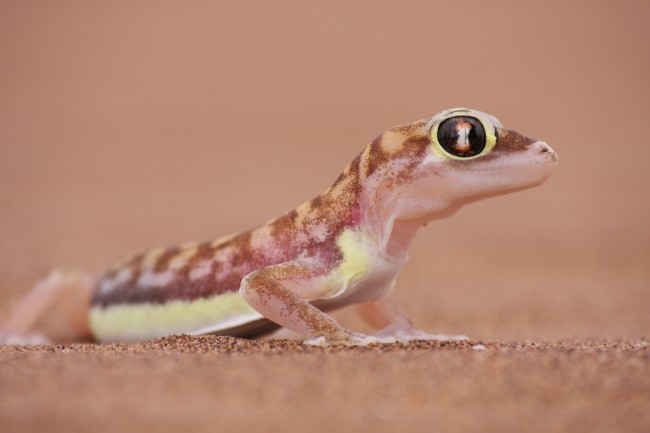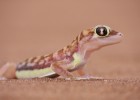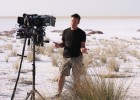Production Details
Nick Baker sees the animal kingdom through a very different pair of eyes! For Nick, beauty in the natural world isn’t all about looks but rather the ability to survive –he’s constantly amazed by the many incredible and bizarre ways in which animals manage to side step extinction. Now Nick is on a mission to change our minds about what constitutes a wildlife ‘looker’ getting us under the skin and into the minds of some wonderful and beautiful freaks of nature.
In this programme Nick travels to Namibia, in Southwestern Africa, one of the harshest environments on this planet, a land of extremes where daytime temperatures can reach a blistering 50 degrees Celsius, plummeting to well below freezing at night. Compounding this is the scarcity of rainfall making this area the driest region in Africa. When faced with such challenging conditions, the natural world goes into overdrive and finds some extremely specialized and surprising solutions to the thorny subject of survival.
Nick’s journey start in Etosha National Park on Namibia’s central plateau, a land of grassveld and savannah, which although it is semi-arid desert supports a surprising amount of life. Even its harshest area, the Salt Pan, is dotted with life. This is an extraordinary place, a vision from the end of the world – an ancient lake, covering one and a half million acres, made up of salt encrusted clay and not a lot else. But wildlife is drawn by the relative safety that its flatness offers, protection from the many lions waiting for their next meal. Nick finds that even the most familiar safari super stars have evolved many different ways of dealing with the punishing heat.
Moving on through the Central Plateau Nick shows the viewers that there are several animals that have adapted their bodies in a way that allows them to tap into food sources that are constant and plentiful all year round; the bat eared foxes have an almost exclusively insectivorous diet, very unusual for a canid, and desert elephants can go for days without water, unlike their inland African cousins.
Having travelled over nearly a thousand miles Nick reaches the Namib desert which is one of the most ancient deserts in the world, around 55 million years old and one of the most challenging environment to Nature’s ingenuity. This is a world made up almost entirely of sand, nothing should be able to survive here, but as Nick discovers, it’s a very rich bio system. This is due to dry ‘remains’ that are blown from inland, dead beetles, desiccated plant parts and the fog that rolls in from the Atlantic. Crawling above and below the sands, Nick shows us transparent geckos, sidewinder snakes, shovel nosed lizards and more. There’s a lot going on in the desert if you know where to look.
Nearly 2000 miles on from Etosha, Nick finally reaches the coast and the story this habitat has to tell is no less startling than what has already been discovered. The Bushman of the interior call this place ‘The Land that God made in Anger’. Humans may have fallen foul to this coastline’s inhospitable conditions, but Nature has embraced them. No more so than than at Cape Cross where there is one of the biggest populations of Cape fur seals in the world, as many as 200,000 of them. Finishing his journey Nick travels to one of the remotest areas of the coast to find a crab that is found here and nowhere else on earth; the tufted ghost crab. The richness of the wildlife along the coast is dependent on the Benguala Current that runs the length of the country, bringing with it nutrient rich water which in turn feeds the wildlife of Namibia.


